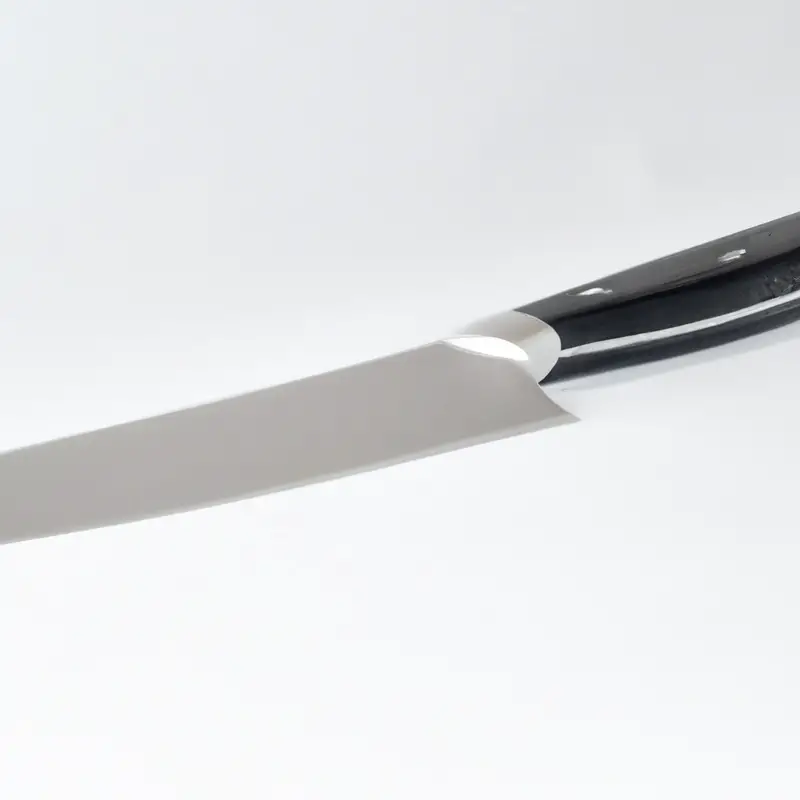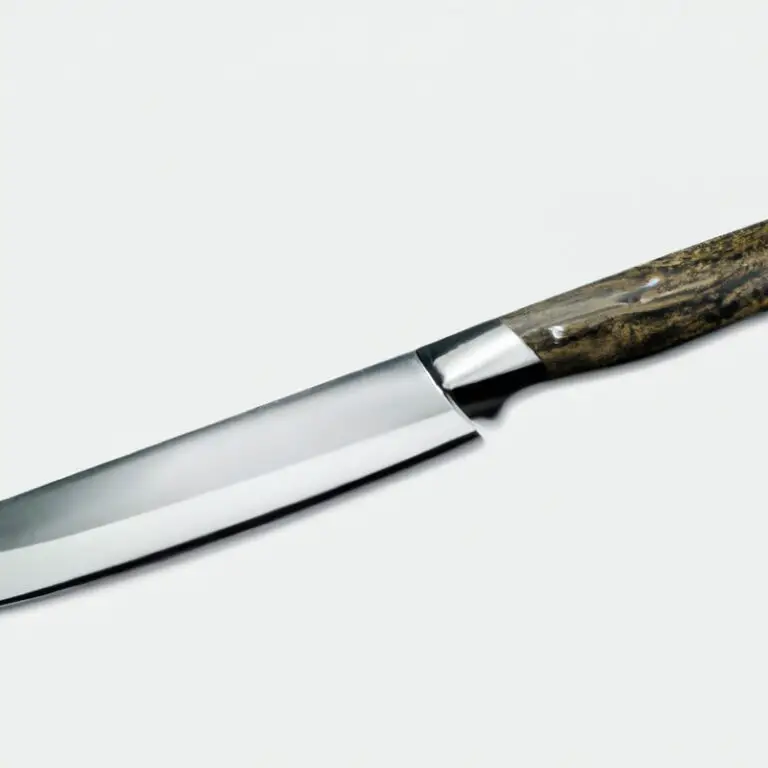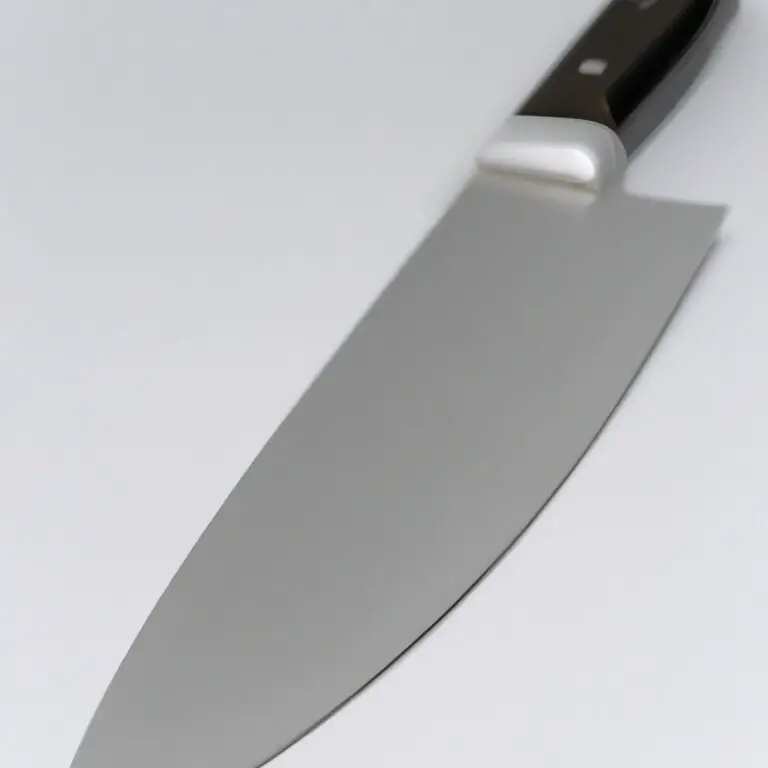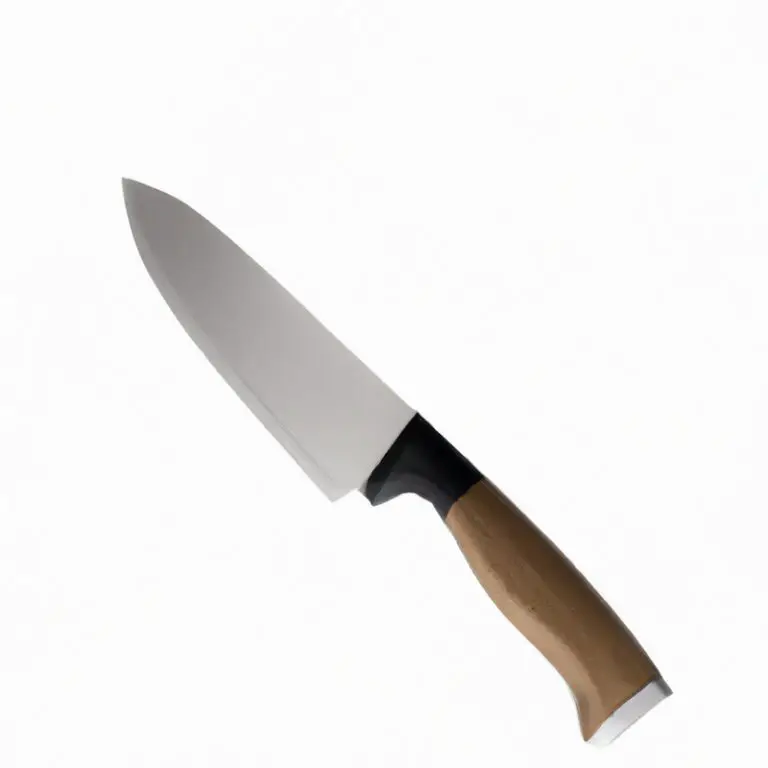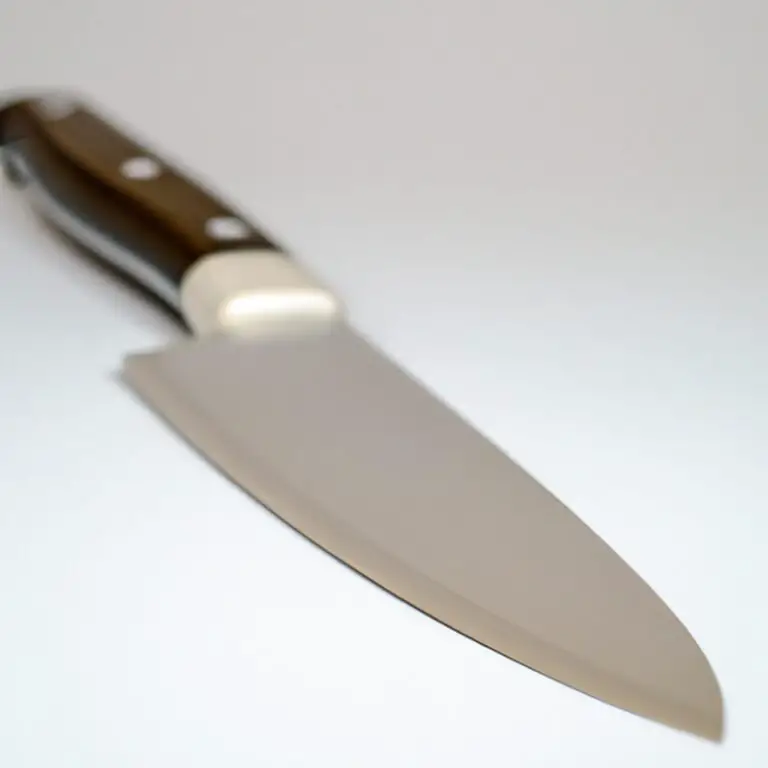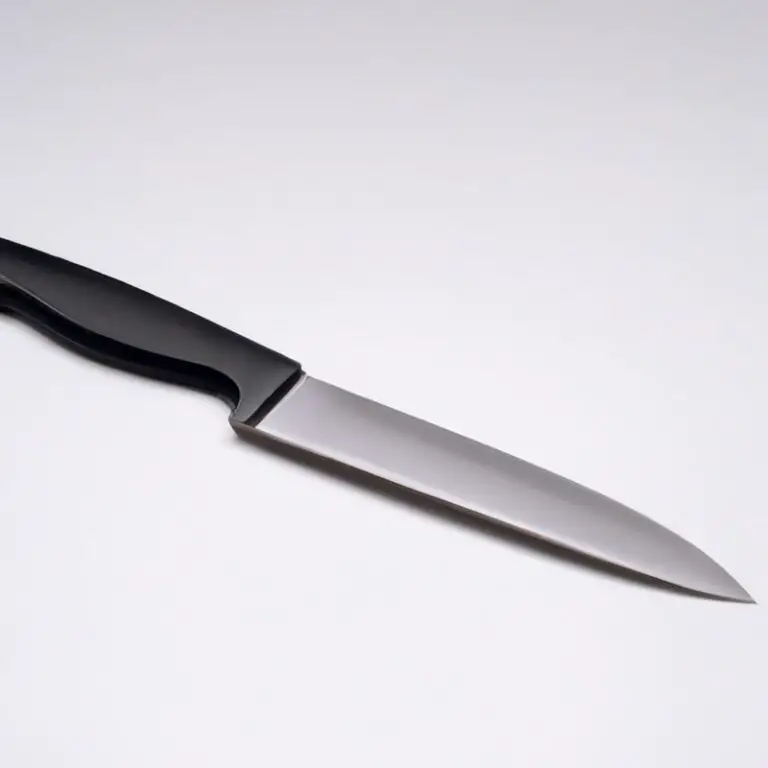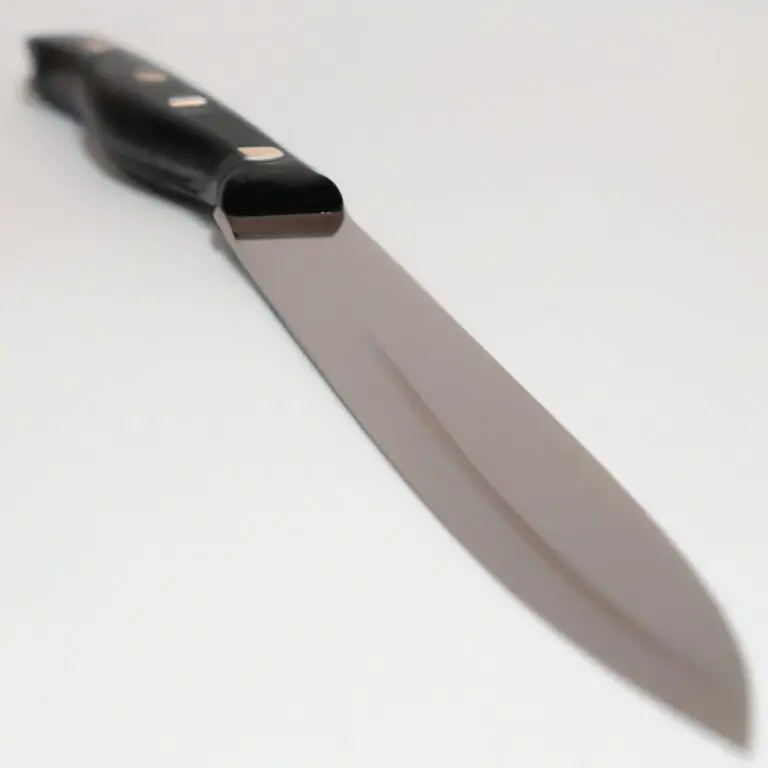What Are The Characteristics Of a Good Steak Knife?
Key Takeaways:
- A good steak knife should have a sharp blade that can easily cut through meat without tearing or shredding it.
- The handle should be comfortable to hold and provide a secure grip, even when the handle is wet.
- The knife’s construction should be durable and made with high-quality materials to ensure longevity.
- Look for a steak knife with a pointed tip to allow for easy removal of bones and cutting around tight spaces.
Picture this: it’s a special occasion, and you’re about to enjoy a perfectly cooked steak. You have the right cut of beef, the perfect wine, and the ideal ambiance.
However, as you approach the steak with your dull and flimsy knife, you realize you’re missing a crucial component.
The right steak knife can make all the difference in your dining experience. But what makes a good steak knife?
From blade material to handle design, we’ll cover everything you need to know to choose the best knife for your meal.
Get ready to elevate your steak game!
| Characteristics | Description |
|---|---|
| Sharpness | A good steak knife should have a sharp blade that can easily cut through steak without tearing it apart. |
| Serrated blade | Serrated edges help to grip meat while slicing, allowing for smoother and cleaner cuts. |
| Blade length | The blade should be long enough to easily cut through the thickness of the steak, but not too long that it becomes unwieldy. |
| Balance | A well-balanced knife will feel comfortable in the hand, making it easier to control during cutting. |
| Durability | A good quality steak knife should be made from high-quality materials that are robust enough to withstand frequent use and remain sharp over time. |
| Handle | The handle should provide a comfortable grip, be easy to clean, and offer good balance to the knife. |
How to Assess the Quality of a Steak Knife: A Comprehensive Guide
To assess the quality of a steak knife, there are several key factors to consider:
- The blade material plays a crucial role in the knife’s effectiveness and durability. High-carbon stainless steel and Damascus steel are two popular options for their sharpness and longevity.
- A serrated blade is often preferred for steak knives, but a straight edge can work well if it is sharp enough.
- The handle design should promote comfort and stability, with materials like wood, plastic, and metal commonly used.
- The tang, or the part of the blade that extends into the handle, can be full or partial. A full tang adds strength and balance to the knife.
- Size matters, with a balance needed between blade length and handle length for optimal use.
- Proper maintenance and care can extend the life of a steak knife, including regular sharpening and hand washing.
Using these factors, you can evaluate different steak knife options to find the best quality for your needs.
Understanding the Anatomy of a Steak Knife: Key Components to Look For
The anatomy of a good steak knife consists of three key components: blade, handle, and tang. The blade should be made of high-quality steel, such as stainless or carbon, and have a sharp serrated edge to effortlessly slice through meat.
The handle should provide a comfortable and secure grip, with materials ranging from wood to synthetic.
A full tang construction, where the blade runs the entire length of the handle, is preferable for added durability and balance. When selecting a steak knife, consider the size and weight that feels most comfortable for your hand and the type of steak you will be cutting.
Understanding these key components will help you choose a steak knife that performs its task with ease and precision.
The Importance of Blade Material: Which Metals Make the Best Steak Knives?
The blade material is crucial in determining the quality and durability of a steak knife. High-quality metals like stainless steel, carbon steel, and high-carbon stainless steel are often used to make steak knives.
Stainless steel is highly resistant to rust and corrosion, making it a popular choice.
Carbon steel, on the other hand, is known for its strength and sharpness, though it requires more maintenance. High-carbon stainless steel combines the best of both worlds, offering strength, sharpness, and resistance to rust and corrosion.
When choosing a steak knife, it is essential to consider the blade material to ensure that it can maintain its sharpness and durability with regular use.
Serrated vs. Straight-Edged Blades: Which Type is More Effective for Steak?
Serrated blades are better at cutting through tougher cuts of steak because the teeth grip onto the meat and allow for a smoother slicing motion. However, straight-edged blades are typically sharper and provide cleaner cuts for tender cuts of steak.
Ultimately, it comes down to personal preference and the type of steak being served.
It is recommended to have both types of blades on hand to ensure the best possible cut for each type of steak.
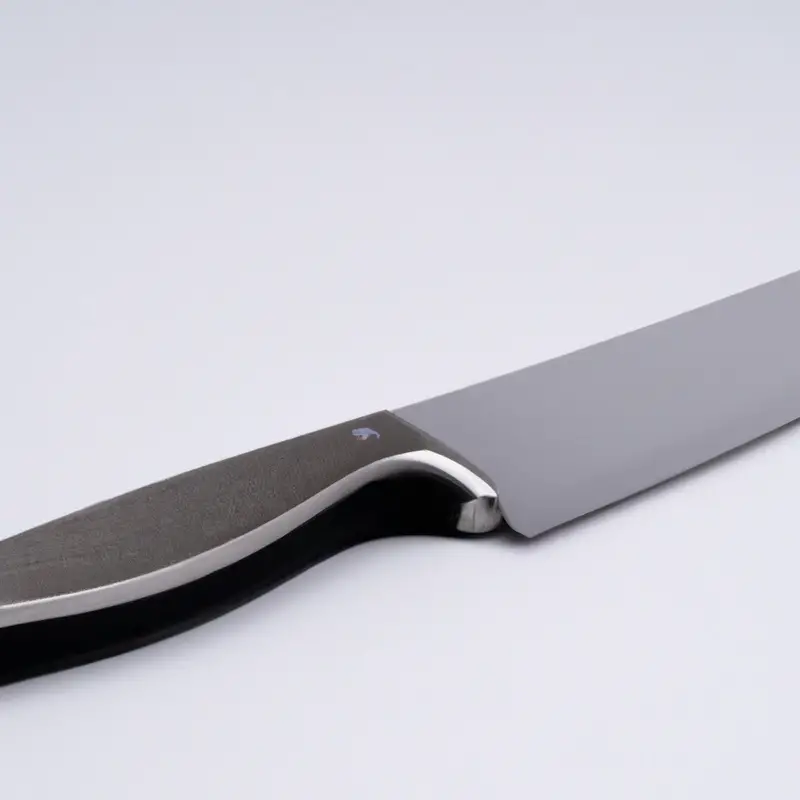
Handle Designs That Maximize Comfort and Stability: A Look at Common Variations
The handle of a steak knife plays a crucial role in providing comfort and stability while cutting through a steak. Various handle designs are available to enhance these features.
Some of the popular designs include the classic straight handle, curved handle, ergonomic handle, and D-shaped handle.
Regardless of the design, it is crucial to prioritize grip and balance. To ensure maximum comfort, the handle should be made of sturdy and non-slip material such as wood, plastic, or stainless steel.
The full tang handle that extends to the end of the knife is recommended for improved stability.
Overall, the handle of a steak knife should fit comfortably in the hand and provide a secure grip to maximize control and minimize hand fatigue during use.
Full Tang vs. Partial Tang: What’s the Difference and Why Does it Matter?
Full tang refers to a blade that extends the full length of the handle, while partial tang means that the blade is connected to only part of the handle. The difference between the two is crucial as it can significantly affect the durability, balance, and strength of the knife.
Full tang knives are often more robust and well-balanced, making them a more reliable and long-lasting option than partial tang knives.
In contrast, partial tang knives may be less expensive, but they are often prone to breaking or bending over time, compromising their durability. Therefore, when choosing a steak knife, it is best to opt for full tang designs to ensure optimal performance, longevity, and comfort while using the knife.
Size Matters: Finding the Perfect Balance Between Blade Length and Handle Length
When it comes to finding the perfect steak knife, the size of the blade and handle matter. The blade length should be between 4.5-5.5 inches, while the handle length should be between 4-5 inches.
This size range allows for a comfortable grip, balance, and control when cutting through a steak.
A good steak knife should feel well-balanced in your hand and should not feel too heavy or too light. Additionally, make sure that the handle is made of a material that provides a comfortable grip and is durable for long-term use.
Overall, the ideal size of a steak knife should provide a perfect balance between the blade and handle to enhance precision, comfort, and ease of use.
Maintenance and Care for Long-Lasting Steak Knives: Best Practices and Tips
To ensure the longevity of your steak knives, proper maintenance and care are essential. Here are some best practices and tips for maintaining your steak knives:
- Hand wash your knives with warm soapy water immediately after use and dry them thoroughly.
- Avoid using abrasive sponges or harsh cleaning chemicals that can damage the blade’s finish.
- Store your knives in a safe place, either in a knife block or a sheath to prevent them from rubbing together and getting damaged.
- Regularly sharpen your knives with a sharpening stone or honing tool to maintain their sharpness.
- Do not put your steak knives in the dishwasher as the harsh detergents and hot water can cause discoloration, rust, and dull the blade’s edge.
- Use cutting boards that are soft and non-abrasive materials like wood or plastic to prevent the blades from getting scratched or dull.
By following these best practices and tips, you can ensure that your steak knives remain in excellent condition for years to come.
From Basic to High-End: Comparing the Pros and Cons of Different Price Ranges
Steak knives are available at various price ranges, ranging from basic to high-end. Basic knives are usually cheaper, made with lower-quality materials, and require frequent sharpening.
They may also have shorter lifespans.
On the other hand, high-end knives are usually expensive, made with high-quality materials, and require minimal maintenance. They also have longer lifespans and offer better cutting performance.
While basic knives may be more accessible and budget-friendly, investing in a high-end steak knife may ultimately be more cost-effective in the long run due to its durability and longevity.
However, it ultimately depends on your personal preferences and needs. Regardless of the price range, it is important to prioritize factors such as blade material, handle design, and size when choosing a steak knife.
Choosing the Best Steak Knife Set: How to Evaluate and Compare Your Options
When it comes to choosing the best steak knife set, there are a few key factors to consider. Firstly, look for high-quality materials such as forged, high-carbon steel for the blades and durable, comfortable handles.
Additionally, consider the style of the blades – serrated edges tend to be more effective for cutting through steak, but straight-edged blades can work well too.
Look for a set with a mix of both if possible. Consider the size of the blades and handles – they should feel comfortable and balanced in your hand.
Also, check whether the set has a full tang or partial tang design – full tang knives will likely be more durable and balanced.
Finally, think about your budget and whether you would prefer a high-end or more affordable set. With these factors in mind, you’ll be able to evaluate and compare your options to find the best steak knife set for your needs.
Expert Recommendations: Top Picks for the Best Steak Knives on the Market
When it comes to choosing the best steak knives on the market, experts recommend a few top picks based on their performance, quality, and overall value. Some of the best options include:
- Wüsthof Classic Steak Knife Set
- Shun Classic Steak Knife Set
- Victorinox Swiss Classic Steak Knife Set
- J.A. Henckels International Stainless Steel 8-Piece Steak Knife Set
- Messermeister Avanta Fine Edge Steak Knife Set
These sets stand out due to their high-quality materials, durable construction, and comfortable handles that provide excellent grip and control. They also feature sharp blades that make cutting through steak easy and effortless.
Whether you’re a professional chef or a steak-loving home cook, these top-rated steak knives are sure to impress.
Custom vs. Mass-Produced Steak Knives: Which Option Is Right for You?
When it comes to choosing between custom and mass-produced steak knives, there are a few factors to consider. Custom-made knives offer the benefit of being tailored to your specific preferences and needs, such as blade length and handle material.
However, they tend to be more expensive and may have longer wait times for production.
On the other hand, mass-produced knives are often more affordable and readily available, but may not have the same level of craftsmanship and personalization as custom knives. It ultimately comes down to your budget, timeline, and desired level of customization.
If you are a collector or have specific design preferences, a custom knife may be worth the investment.
However, if you are simply looking for a reliable and functional steak knife, a mass-produced option may suffice. Regardless of your choice, make sure to prioritize quality materials and a comfortable grip for optimal performance and enjoyment.
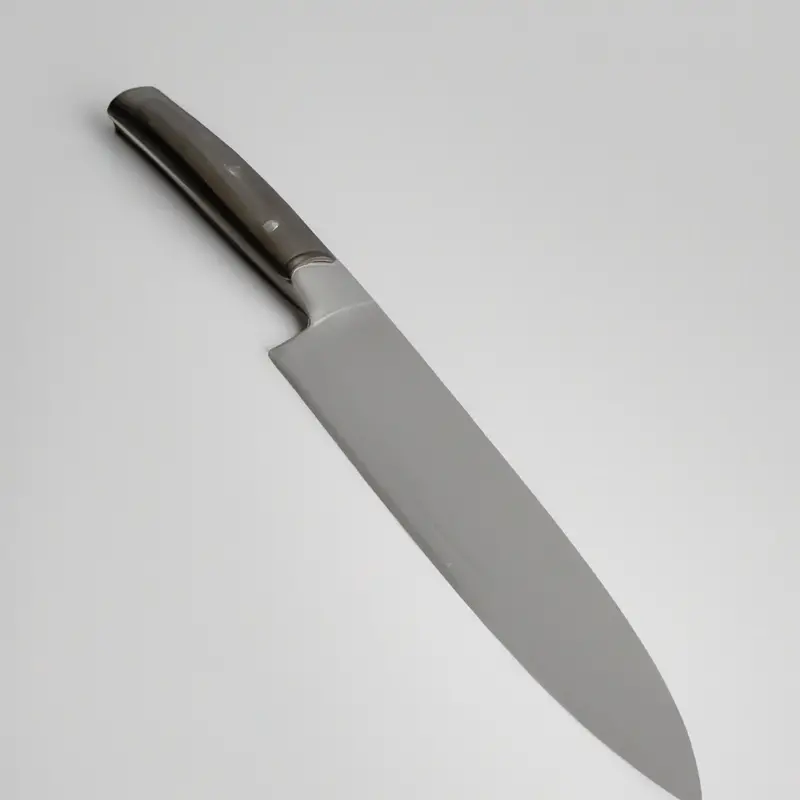
The Evolution of the Steak Knife: A Brief History and Future Trends
The steak knife has been around since the early 1800s, when cowboys needed to cut tough meat during cattle drives. The original design featured a straight-edge blade, wooden handle, and a curved end for leverage.
In the mid-20th century, serrated edges were introduced, making it easier to cut through the fibrous tissue of beef, and materials such as stainless steel replaced wood for handles.
Today, steak knives come in a variety of designs and materials, and there is a growing trend towards high-quality, custom-made knives. Many manufacturers use modern materials such as titanium and carbon fiber to create lightweight, durable knives with sharp, long-lasting edges.
As consumer interest in sustainable products grows, some companies have begun using recycled materials and eco-friendly manufacturing processes to create steak knives with a reduced environmental impact.
Moving forward, it is likely that we will see even more innovation in the design and production of steak knives, with a continued focus on performance, sustainability, and aesthetics.
Connoisseur Tips: How to Pair Different Steak Knives with Various Cuts of Beef
Different cuts of beef require different types of steak knives to ensure the best dining experience. For instance, a straight-edged blade is ideal for a tender cut like the filet mignon because it requires less sawing and minimal pressure.
In contrast, a serrated blade works well for tougher cuts like the flank or skirt steak as it can easily slice through the meat fibers.
It is recommended to pair a heavier and sturdier steak knife with larger, bone-in cuts to ensure ease of handling. Additionally, matching the handle and blade material to the steak’s texture and flavor can elevate the dining experience.
For example, using a wood handle with a gamey steak enhances the dish’s rustic flavors.
Overall, focusing on the meat’s texture, shape, and weight can help you choose the right steak knife to enhance the overall dining experience.
Innovative Steak Knife Designs: Exploring Unique Features and Specialty Versions
Innovative steak knife designs offer unique features and specialty versions for a more personalized dining experience. From offset handles to serrated tip blades, these designs cater to specific needs and preferences.
Innovative designs like the KAI Wasabi Black Yanagiba Steak Knife with a single bevel, for example, can easily slice through any steak while preserving the flavor and texture.
The Wusthof Classic Ikon Steak Knives, on the other hand, sport a sleek, modern appearance and a comfortable grip. Some brands even offer custom engraving options for a truly unique touch.
Overall, innovative steak knife designs provide greater versatility and style options for a more enjoyable dining experience.
Final Verdict
A good steak knife should have a sharp, serrated blade made of high-quality steel, a comfortable and stable handle, a proper balance between blade length and handle length, and a full tang to ensure durability and strength. The blade design (straight or serrated) may vary depending on personal preference, as well as the cut of meat being served.
When selecting a steak knife, consider factors such as maintenance and care, price range, and the option of custom or mass-produced designs.
By applying these characteristics to your selection process, you can find the perfect steak knife that will enhance your dining experience and impress your guests. Remember, investing in a good steak knife is worth it for the long-lasting functionality and enjoyment it provides.

